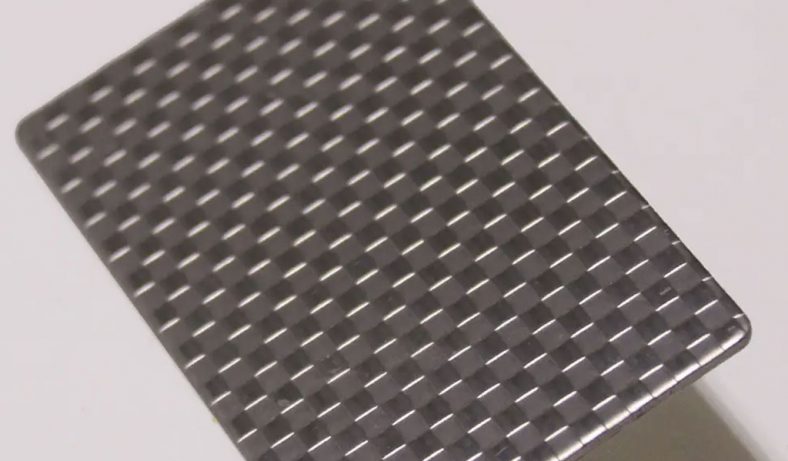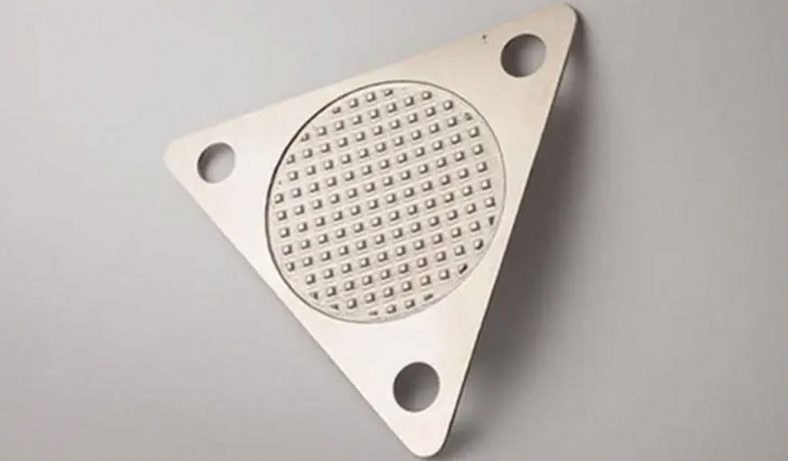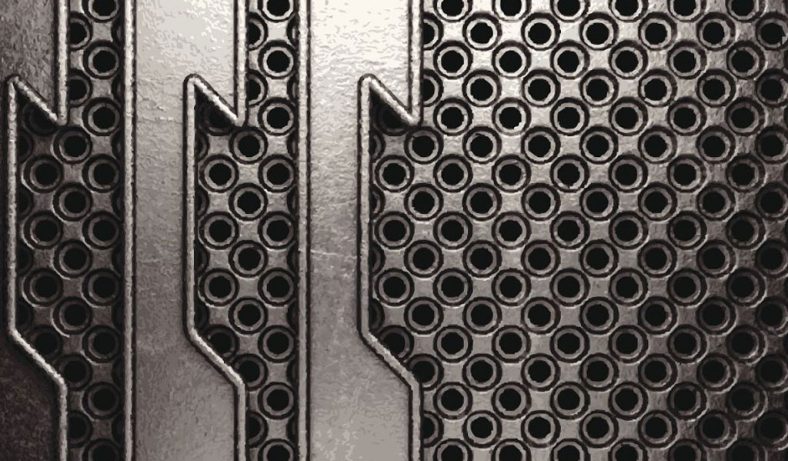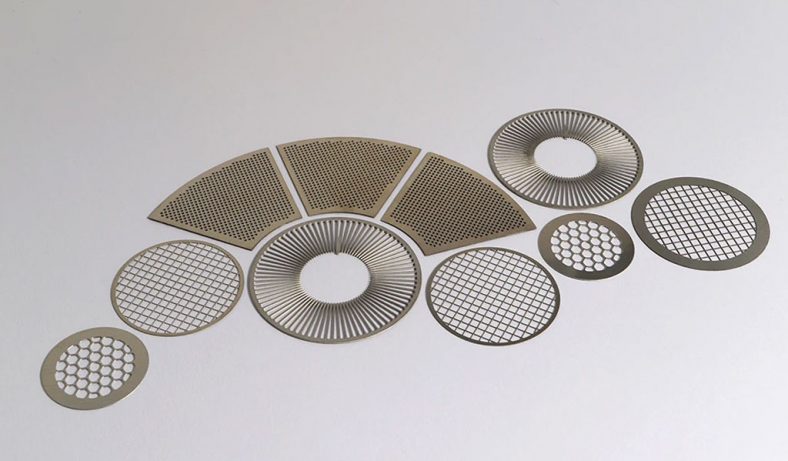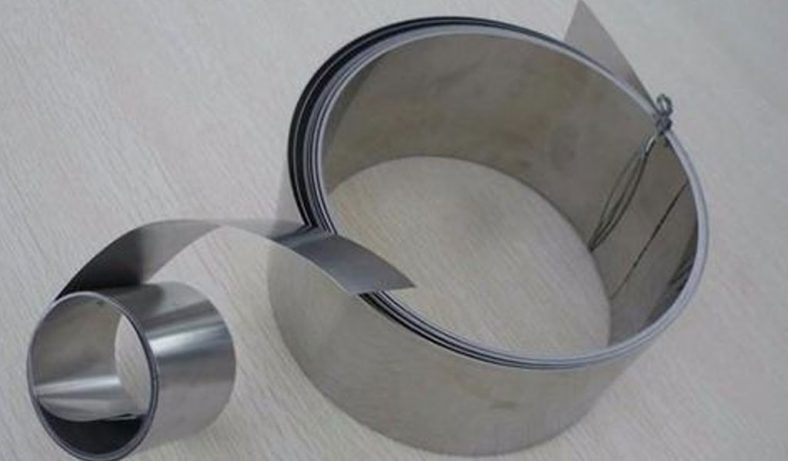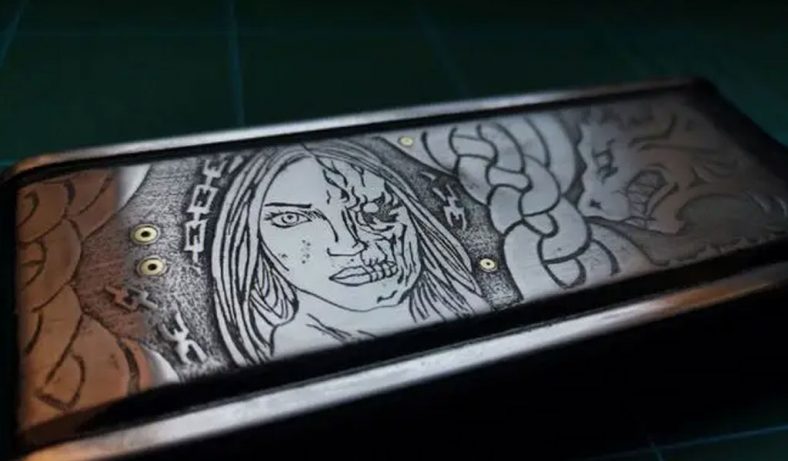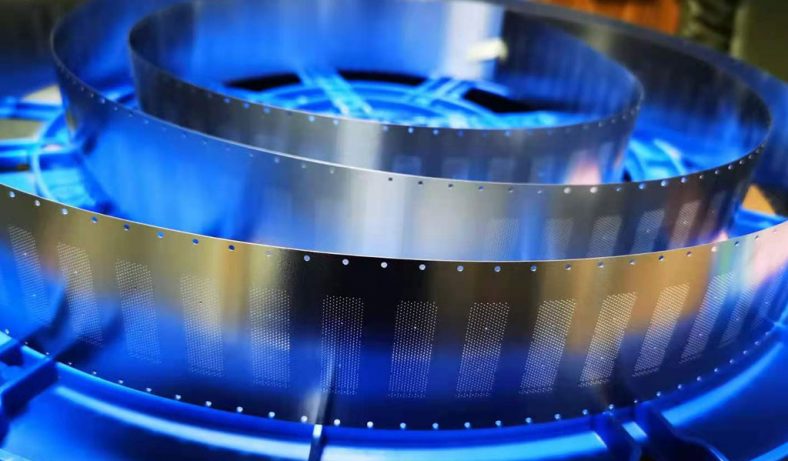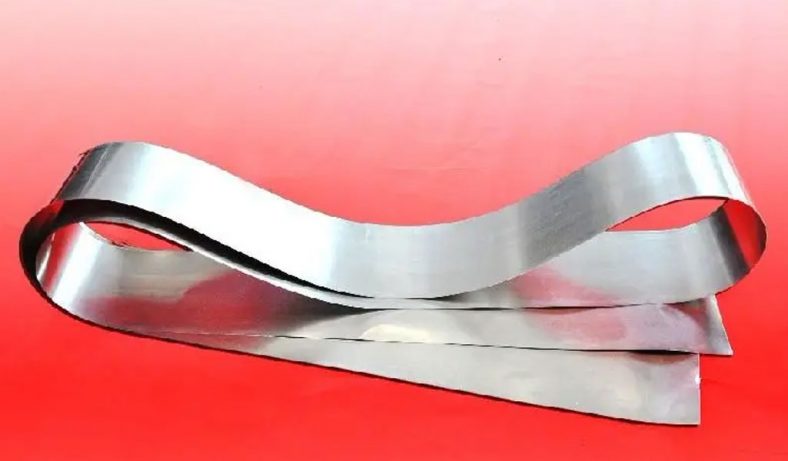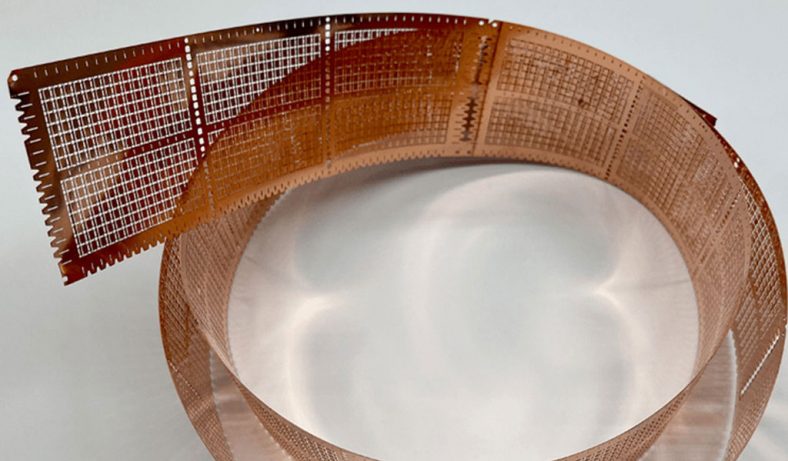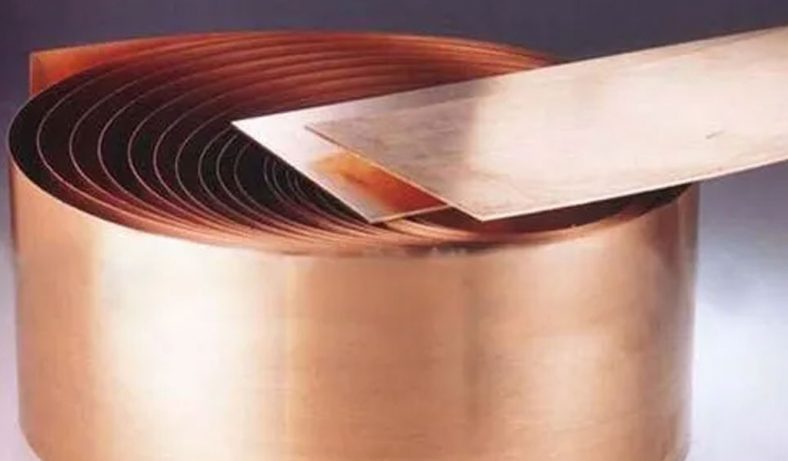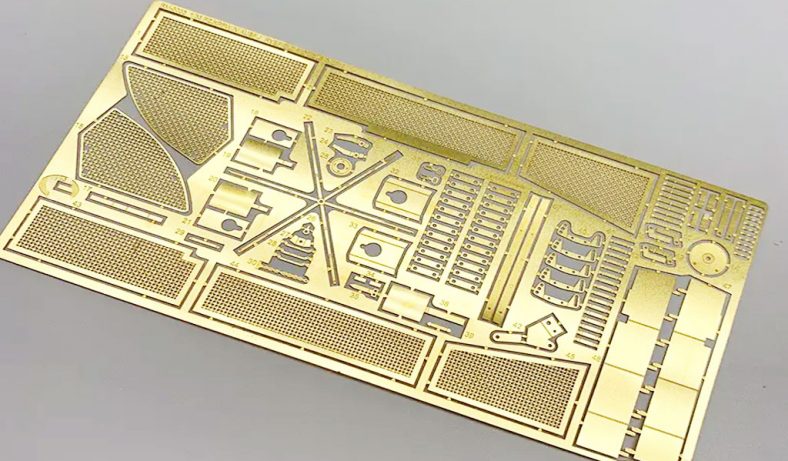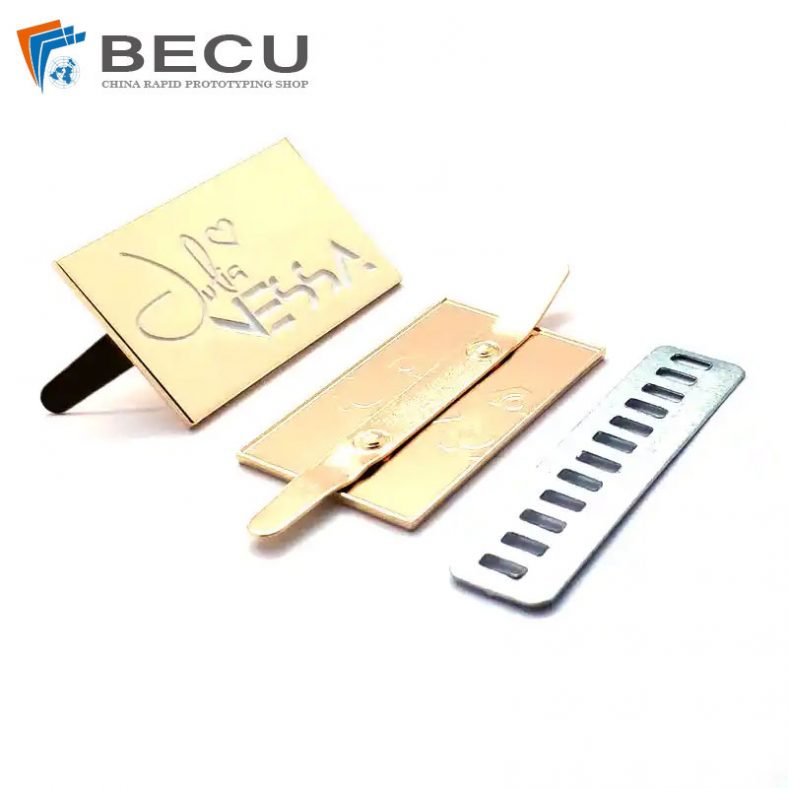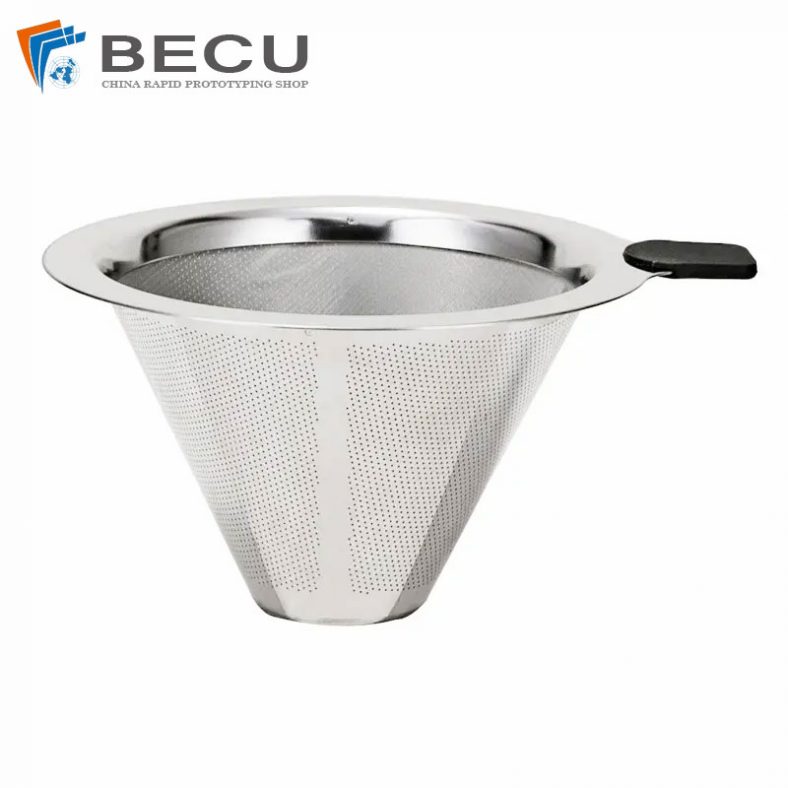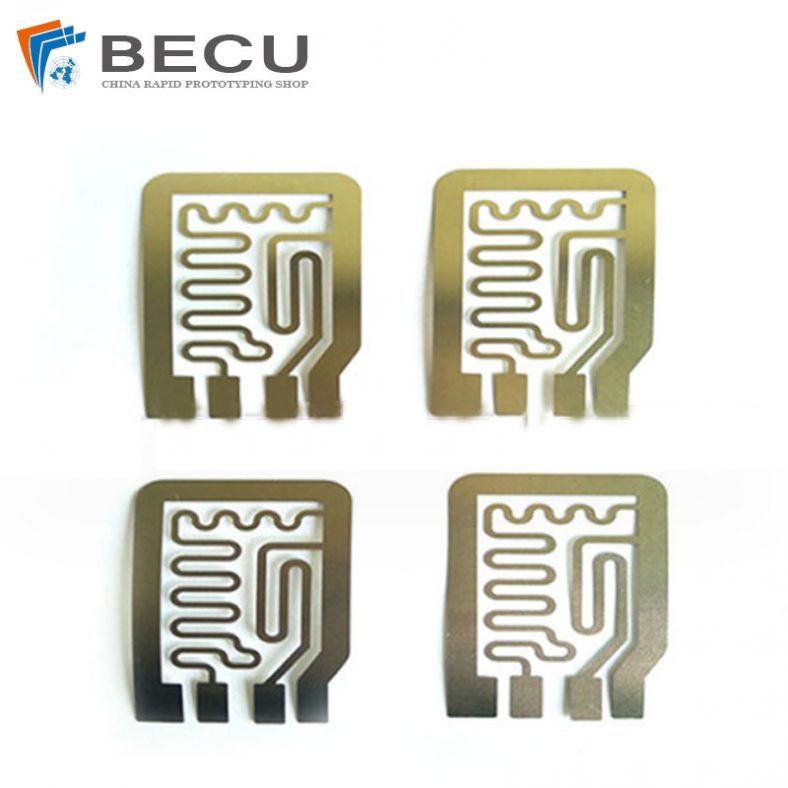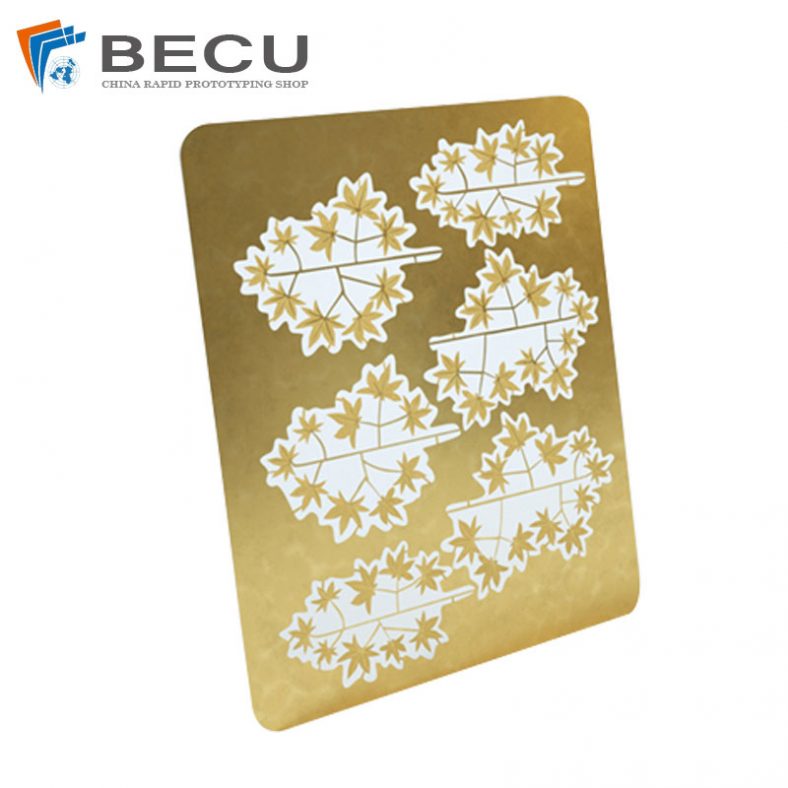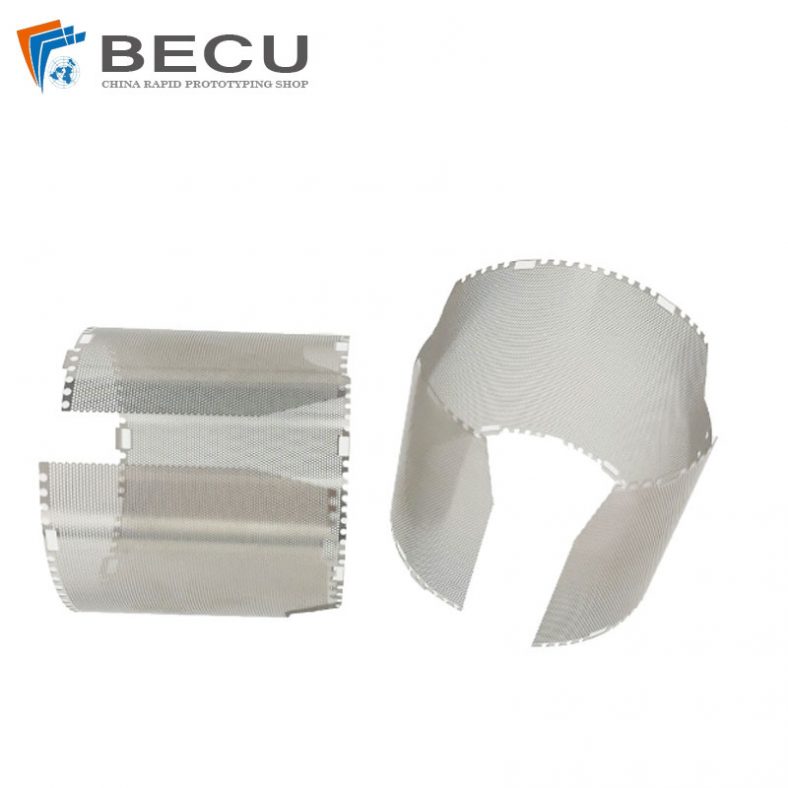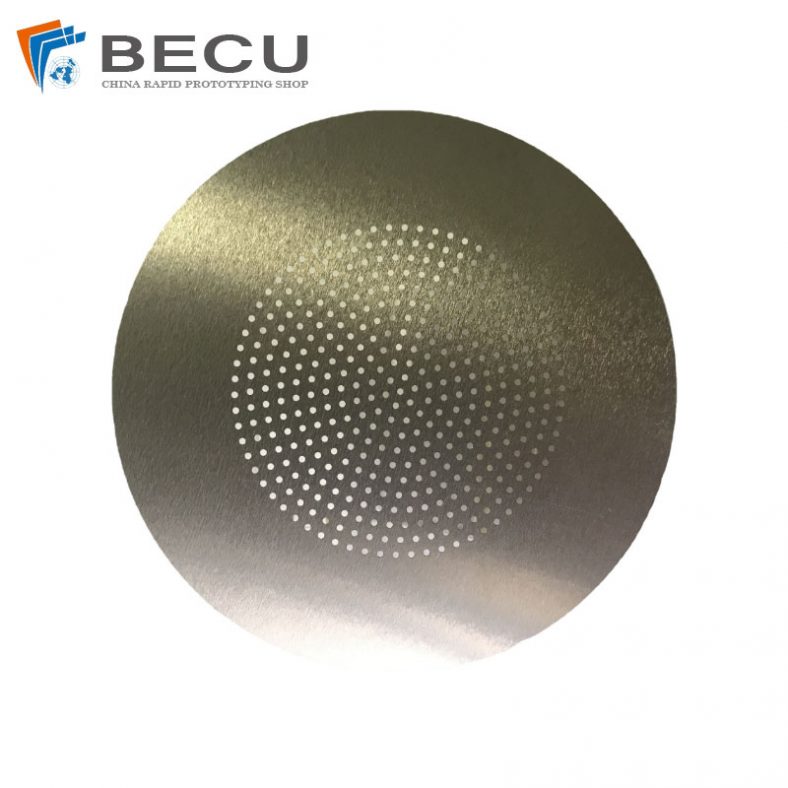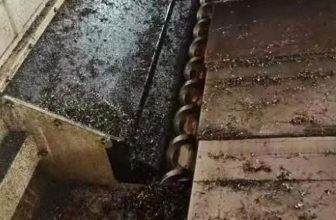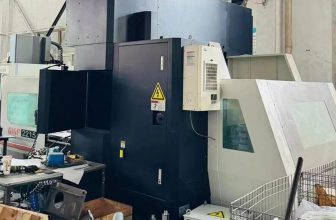Plasma etching is a cornerstone technology in micro- and nanofabrication, enabling precise pattern transfer in the production of advanced electronic, optical, and biomedical devices. In the context of gold (Au) alloys, plasma etching is particularly critical due to their unique properties, such as high electrical conductivity, chemical stability, and biocompatibility, which make them indispensable in applications ranging from microelectronics to plasmonic devices and biomedical implants. Gold alloys, typically composed of gold mixed with elements like silver (Ag), copper (Cu), nickel (Ni), or palladium (Pd), present distinct challenges in plasma etching due to their heterogeneous composition and varying chemical reactivities. Achieving high precision in micro- and nanoscale processing of these materials requires meticulous control of etching parameters, including plasma chemistry, ion energy, substrate temperature, and chamber pressure. This article provides a comprehensive exploration of the principles, mechanisms, and parameter control strategies for plasma etching of gold alloys in micro-nano processing, drawing on recent scientific advancements and practical applications.
The process of plasma etching involves the use of a partially ionized gas (plasma) to remove material from a substrate through physical and chemical interactions. For gold alloys, the etching process must balance selectivity (the preferential etching of the target material over the mask or substrate), anisotropy (the directionality of etching to achieve vertical sidewalls), and minimal surface damage to preserve the material’s functional properties. The complexity of gold alloys, with their varying elemental compositions and microstructural properties, necessitates tailored etching recipes and advanced diagnostic techniques to optimize outcomes. This article delves into the physics and chemistry of plasma etching, the influence of key parameters, and emerging trends in the field, offering a detailed resource for researchers, engineers, and technologists.
Fundamentals of Plasma Etching
Plasma Generation and Characteristics
Plasma, often referred to as the fourth state of matter, is a partially ionized gas consisting of electrons, ions, neutral atoms, and reactive radicals. In plasma etching, a low-pressure gas is energized by an electric field, typically through radio frequency (RF) or microwave sources, to create a plasma. Common plasma generation techniques include capacitively coupled plasma (CCP), inductively coupled plasma (ICP), and electron cyclotron resonance (ECR) systems. Each method offers distinct advantages in terms of plasma density, ion energy control, and uniformity, which are critical for etching gold alloys.
The plasma environment is characterized by several key parameters:
- Electron Temperature (T_e): Typically in the range of 1–10 eV, this governs the energy available for ionization and dissociation processes.
- Ion Density: Higher ion densities, as achieved in ICP systems (10^11–10^12 cm^-3), enhances etching rates but requires careful control to avoid surface damage.
- Neutral-to-Ion Ratio: The balance between reactive neutrals (e.g., radicals) and ions influences the chemical versus physical etching mechanisms.
- Plasma Potential: This determines the energy of ions bombarding the substrate, typically controlled via substrate biasing.
For gold alloys, the choice of plasma generation method impacts the etching efficiency. ICP systems, for instance, are favored for their high plasma density and ability to etch high-aspect-ratio features, as demonstrated in studies of III-V semiconductor etching.
Etching Mechanisms
Plasma etching of gold alloys involves a combination of physical and chemical processes:
- Physical Etching: Ion bombardment, driven by the acceleration of positive ions toward the negatively biased substrate, physically removes material through sputtering. This is particularly relevant for gold, which has a relatively high sputtering yield due to its atomic mass.
- Chemical Etching: Reactive species, such as halogen radicals (e.g., Cl•, F•), form volatile compounds with the substrate material, which are then desorbed from the surface. For gold, chlorine-based chemistries (e.g., Cl_2, BCl_3) are commonly used due to the formation of volatile AuCl_x compounds.
- Physicochemical Etching: The synergy of ion bombardment and chemical reactions enhances etching efficiency, enabling anisotropic profiles. This is critical for micro-nano processing, where vertical sidewalls are often required.
The etching mechanism for gold alloys is complicated by the presence of alloying elements. For example, copper in Au-Cu alloys may form less volatile CuCl_x compounds, leading to differential etching rates and potential surface residue. Understanding these mechanisms requires detailed surface chemistry studies, often supported by techniques like X-ray photoelectron spectroscopy (XPS) and energy-dispersive X-ray spectroscopy (EDX).
Challenges in Gold Alloy Etching
Gold alloys pose unique challenges in plasma etching:
- Heterogeneous Composition: The varying reactivities of alloying elements (e.g., Au, Cu, Ag) necessitate tailored gas chemistries to achieve uniform etching.
- Low Volatility of Etch Products: Unlike silicon or III-V semiconductors, gold chlorides have moderate volatility, requiring higher ion energies or elevated substrate temperatures to facilitate desorption.
- Surface Damage: High-energy ion bombardment can induce lattice defects or amorphization, degrading the electrical or optical properties of gold alloy nanostructures.
- Mask Selectivity: Achieving high selectivity between the gold alloy and the etch mask (e.g., photoresist, SiO_2, or metal hard masks) is critical to maintain pattern fidelity.
These challenges underscore the importance of precise parameter control, which is explored in subsequent sections.
Key Parameters in Plasma Etching of Gold Alloys
Plasma Chemistry
The choice of etch gas is a primary determinant of etching performance. Common gases for gold alloy etching include:
- Chlorine-Based Gases (Cl_2, BCl_3): Cl_2 is highly effective for gold due to the formation of volatile AuCl_x compounds. BCl_3 enhances etching of alloying elements like Al or Cu by forming volatile chlorides.
- Fluorine-Based Gases (SF_6, CF_4): These are less common for gold but are used in specific applications, such as diamond etching with gold masks, to reduce redeposition.
- Oxygen (O_2): O_2 is used in combination with halogens to enhance etch anisotropy by forming passivation layers on sidewalls, though it must be carefully controlled to avoid oxidation of alloying elements.
- Inert Gases (Ar, N_2): Argon provides physical sputtering to increase etch rates, while nitrogen can enhance sidewall passivation, improving aspect ratios.
Table 1: Common Etch Gases for Gold Alloy Plasma Etching
| Gas | Primary Role | Advantages | Challenges |
|---|---|---|---|
| Cl_2 | Chemical etching of Au | High etch rate, volatile AuCl_x products | Limited selectivity to some masks |
| BCl_3 | Etching of alloying elements (Cu, Al) | Enhances uniformity in alloys | Potential residue formation |
| SF_6 | Fluorine-based etching | Reduces redeposition | Low reactivity with Au |
| O_2 | Sidewall passivation | Improves anisotropy | Risk of oxidation |
| Ar | Physical sputtering | Increases etch rate | Non-selective, potential surface damage |
| N_2 | Sidewall passivation | Enhances high-aspect-ratio etching | May reduce etch rate |
The gas mixture must be optimized based on the alloy composition. For Au-Ag alloys, Cl_2/Ar mixtures are effective, while Au-Cu alloys may require BCl_3 to address copper’s lower volatility. Recent studies have explored halogen-free chemistries to reduce plasma-induced damage, particularly for sensitive applications like plasmonic devices.
Ion Energy and Substrate Bias
Ion energy, controlled via substrate bias power, is a critical parameter influencing etch anisotropy and surface damage. Typical bias voltages range from 10–500 V, corresponding to ion energies of 10–1000 eV. For gold alloys:
- Low Ion Energy (<100 eV): Favors chemical etching, reducing physical damage but potentially leading to isotropic profiles.
- Moderate Ion Energy (100–300 eV): Balances chemical and physical etching, achieving anisotropic profiles with minimal damage. This is ideal for micro-nano features.
- High Ion Energy (>300 eV): Enhances etch rates but risks surface amorphization and defect formation, particularly in thin gold alloy films.
Substrate bias also affects mask selectivity. For example, a study on GaAs etching with a gold mask reported that low bias power (10 W) preserved mask integrity while achieving high-aspect-ratio features.
Table 2: Effect of Ion Energy on Gold Alloy Etching
**
| Ion Energy (eV) | Etch Rate (nm/min) | Anisotropy | Surface Damage | Mask Selectivity |
|---|---|---|---|---|
| <100 | 50–100 | Low | Minimal | High |
| 100–300 | 100–200 | High | Moderate | Moderate |
| >300 | 200–400 | High | High | Low |
Substrate Temperature
Substrate temperature influences the desorption of etch products and surface reaction kinetics. For gold alloys:
- Low Temperature (<0°C): Cryogenic etching reduces plasma-induced damage and enhances anisotropy by stabilizing volatile etch products. This is particularly effective for low-k dielectrics and chalcogenide alloys but less common for gold due to equipment complexity.
- Room Temperature (20–50°C): Standard for most gold alloy etching, balancing etch rate and equipment simplicity.
- Elevated Temperature (50–150°C): Enhances desorption of low-volatility etch products (e.g., CuCl_x), but risks mask degradation and lateral etching.
Table 3: Substrate Temperature Effects
| Temperature (°C) | Etch Rate (nm/min) | Anisotropy | Etch Product Desorption | Equipment Complexity |
|---|---|---|---|---|
| <0 | 50–150 | High | Moderate | High |
| 20–50 | 100–250 | Moderate | High | Low |
| 50–150 | 150–300 | Low | Very High | Moderate |
Chamber Pressure
Chamber pressure affects the mean free path of plasma species and the balance between chemical and physical etching:
- Low Pressure (<10 mTorr): Increases ion energy and anisotropy due to longer mean free paths, ideal for high-aspect-ratio features.
- Moderate Pressure (10–50 mTorr): Balances chemical and physical etching, suitable for most gold alloy applications.
- High Pressure (>50 mTorr): Enhances chemical etching but reduces anisotropy, leading to undercutting.
Table 4: Chamber Pressure Effects
| Pressure (mTorr) | Etch Rate (nm/min) | Anisotropy | Uniformity | Plasma Density |
|---|---|---|---|---|
| <10 | 100–200 | High | High | High |
| 10–50 | 80–150 | Moderate | Moderate | Moderate |
| >50 | 50–100 | Low | Low | Low |
Process Time and Cyclic Etching
The duration of etching and the use of cyclic processes (e.g., Bosch process) significantly impact outcomes. The Bosch process alternates etching and passivation steps to achieve high-aspect-ratio features with minimal sidewall damage. For gold alloys, a modified Bosch process using Cl_2/Ar etching and O_2 passivation has been reported to enhance profile control.
Table 5: Cyclic vs. Continuous Etching
| Process Type | Etch Rate (nm/min) | Sidewall Quality | Aspect Ratio | Complexity |
|---|---|---|---|---|
| Continuous | 100–300 | Moderate | 10–30 | Low |
| Cyclic (Bosch) | 80–200 | High | 30–100 | High |
Advanced Techniques in Gold Alloy Etching
Inductively Coupled Plasma (ICP) Etching
ICP etching is widely used for gold alloy processing due to its high plasma density (10^11–10^12 cm^-3) and independent control of ion energy and plasma generation. A study on GaAs/AlGaAs etching with a gold mask demonstrated aspect ratios >30 using Cl_2/BCl_3/Ar/N_2 chemistry in an ICP reactor. Key advantages include:
- High etch rates (up to 400 nm/min).
- Excellent uniformity across large wafers.
- Flexibility in gas chemistry for alloy optimization.
Atomic Layer Etching (ALE)
ALE is an emerging technique that achieves atomic-scale precision by alternating self-limiting chemical adsorption and low-energy ion bombardment steps. For gold alloys, ALE using Cl_2 adsorption and Ar ion removal has shown promise in reducing surface damage and improving profile control, particularly for sub-10 nm features.
Cryogenic Etching
Cryogenic etching at temperatures below 0°C minimizes plasma-induced damage and enhances anisotropy. While primarily used for low-k dielectrics, recent studies suggest its applicability to gold alloys with O_2/Cl_2 chemistries to stabilize volatile etch products.
Nonlinear Parameter Evolution
Nonlinear parameter evolution, where parameters like RF power or gas flow are varied during etching, improves etch quality. A study on sub-micron feature etching reported that an optimized nonlinear method balanced etch and deposition steps, achieving smoother sidewalls and higher aspect ratios.
Applications of Gold Alloy Plasma Etching
Microelectronics
Gold alloys are used in interconnects, contact pads, and plasmonic structures in microelectronics. Plasma etching enables the fabrication of sub-100 nm features with high precision, supporting Moore’s Law scaling. For example, Ru-Au alloys are being explored as low-resistivity interconnects, requiring O_2-based plasma etching to maintain oxide-free surfaces.
Plasmonic Devices
Gold alloy nanostructures, such as nanorods and nanoparticles, are critical for plasmonic applications like surface-enhanced Raman spectroscopy (SERS). Plasma etching ensures precise control of feature size and spacing, enhancing optical performance. A study on Au-Ag alloy nanopatterning reported improved SERS sensitivity using Cl_2/Ar etching.
Biomedical Implants
Gold alloys, particularly Au-Ti and Au-Pd, are used in dental implants and biosensors due to their biocompatibility. Plasma etching creates micro- and nanotopographies that enhance osseointegration, as demonstrated in studies of Ti6Al4V alloy etching.
MEMS and NEMS
Micro- and nanoelectromechanical systems (MEMS/NEMS) rely on gold alloys for conductive layers and structural components. ICP etching enables high-aspect-ratio features, supporting applications like micromotors and sensors.
Challenges and Future Directions
Surface Damage Mitigation
High-energy ion bombardment can degrade the electrical and optical properties of gold alloy nanostructures. Future research should focus on low-damage techniques like ALE and cryogenic etching, as well as post-etch passivation to restore surface integrity.
Scalability and Cost
While ICP and ALE offer superior performance, their equipment complexity and cost limit scalability. Innovations in plasma reactor design and process optimization are needed to make these techniques viable for large-scale production.
Environmental Sustainability
Plasma etching relies on halogen-based gases, raising environmental concerns. Halogen-free chemistries and recycling systems are emerging as sustainable alternatives, with preliminary success in O_2-based etching of Ru-Au alloys.
Integration with Emerging Materials
Gold alloys are increasingly paired with 2D materials (e.g., graphene, MoS_2) and topological semimetals in next-generation devices. Plasma etching must adapt to these heterogeneous systems, requiring new chemistries and parameter control strategies.
Conclusion
Plasma etching of gold alloys is a complex but essential process in micro-nano processing, enabling the fabrication of advanced devices across microelectronics, plasmonics, biomedical, and MEMS applications. Precise control of parameters—plasma chemistry, ion energy, substrate temperature, chamber pressure, and process time—is critical to achieving high etch rates, anisotropy, and minimal surface damage. Advanced techniques like ICP, ALE, and cryogenic etching are pushing the boundaries of precision and scalability, while addressing challenges like surface damage and environmental impact. As the demand for smaller, more efficient devices grows, ongoing research and innovation in plasma etching will continue to drive progress in gold alloy processing, supporting the next generation of technological advancements.

